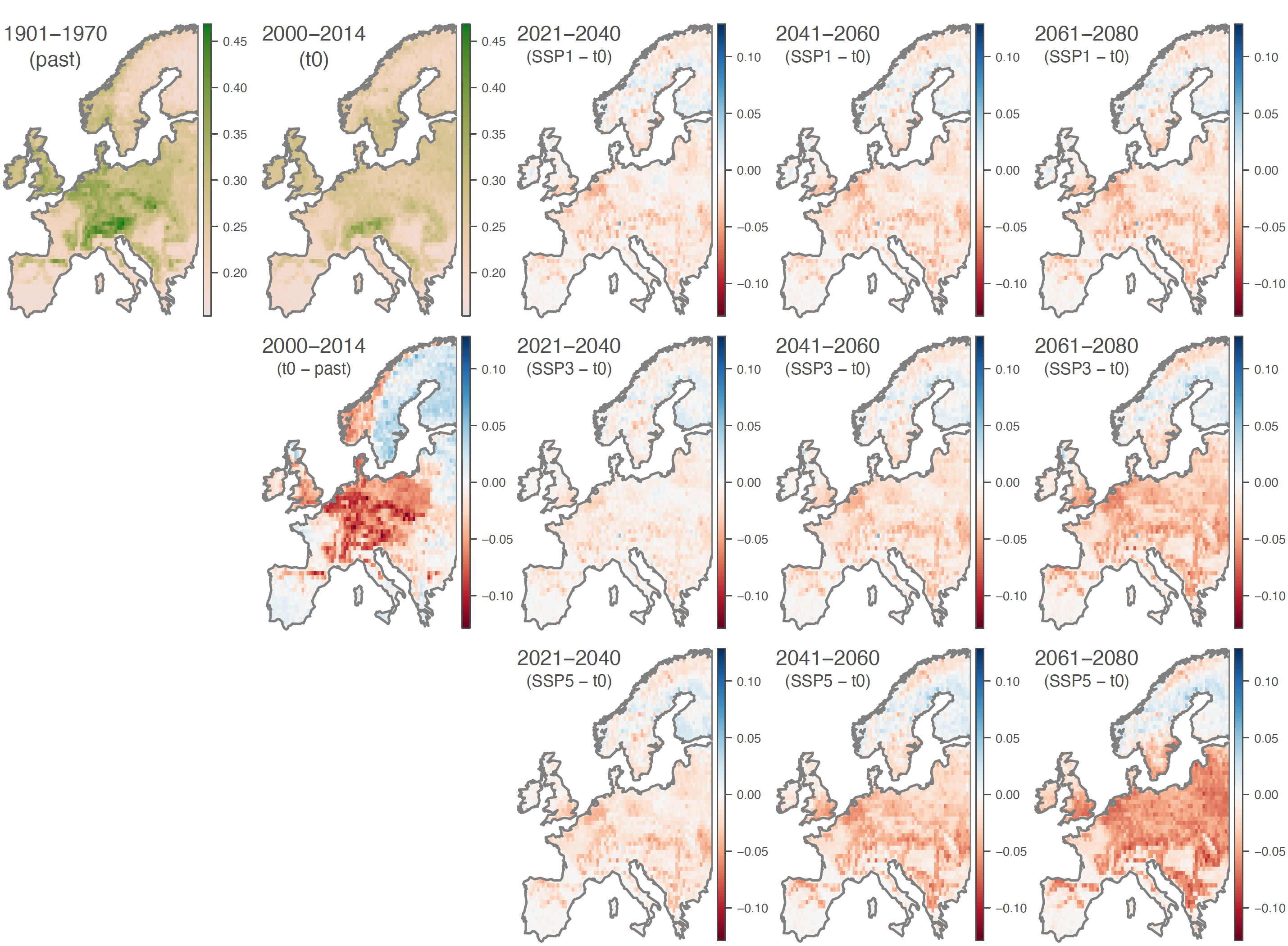New publication in Nature: projected decline in European bumblebee populations in the 21st century
Published on September 11, 2023, by Simon Dellicour
Our new study on the projected decline in European bumblebee populations has been published in Nature. Habitat degradation and climate change are globally acting as pivotal drivers of wildlife collapse, with mounting evidence that this erosion of biodiversity will accelerate in the following decades. In this study, we quantified the past, present, and future ecological suitability of Europe for bumblebees, a threatened group of pollinators ranked among the highest contributors to crop production value in the northern hemisphere. To this end, we employed a machine learning approach (boosted regression trees) to train ecological niche models on more than 400,000 georeferenced occurrence records. We demonstrate (i) coherent declines in bumblebee populations since 1900 over most of Europe and (ii) identify future large-scale range contractions of bumblebees habitats under future climatic and land use scenarios. >75% of these species currently classified as ‘least concern’ are projected to undergo losses of at least 30% of ecologically suitable territory by ~2070. With several species presently listed as ‘least concern’ projected to undergo acute decreases in the spatial extent of their ecological niche, we find that the current risk assessments are too conservative, and not reflective of their projected population trends. All explored scenarios highlight that parts of Scandinavia could become potential refugia for European bumblebees, but it remains uncertain whether these areas would remain clear of additional anthropogenic stressors not accounted for in current models. Our results underline the critical role of climate change mitigation policies as effective levers to protect bumblebees from man-made transformation of the biosphere. Subsequent conservation measures will have to be applied hand in hand with stringent global policies aiming to mitigate the human footprint on such vital ecosystem providers, incorporating strengthened regulations on the greenhouse gas emissions and landscape management at national and continental scales.
This interdisciplinary study has been made possible by a close collaboration between our lab, the Laboratory of Zoology (University of Mons - UMons), Dr Wim Thiery (BCLIMATE group leader, Vrije Universiteit Brussel - VUB) and Dr François Massonnet (Earth and Life Institute, University of Louvain - UCLouvain). Read the whole study here.

Figure: mapped changes in ecological suitability for 46 European bumblebee species based on an observational data set of >400,000 unique georeferenced occurrence records. The authors here report the ecological suitability index (ESI) defined as the local mean ecological suitability averaged over species (ranging from ‘0’ to ‘1’). They report ESI estimates for the past and present-day (‘t0’, 2000-2014) projections, as well as the differences between past (1901-1970), present (‘t0’), and future (2021-2040, 2041-2060, and 2061-2080) projections.
Reference: Ghisbain G, Thiery W, Massonnet F, Erazo D, Rasmont P, Michez D, Dellicour S (2023). Projected decline in European bumblebee populations in the twenty-first century. Nature 628: 337-341